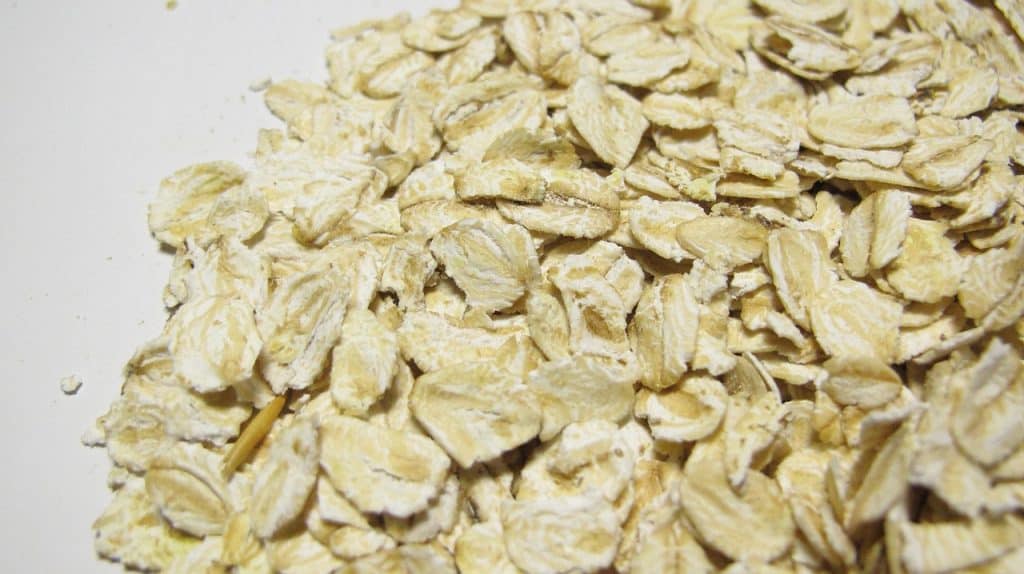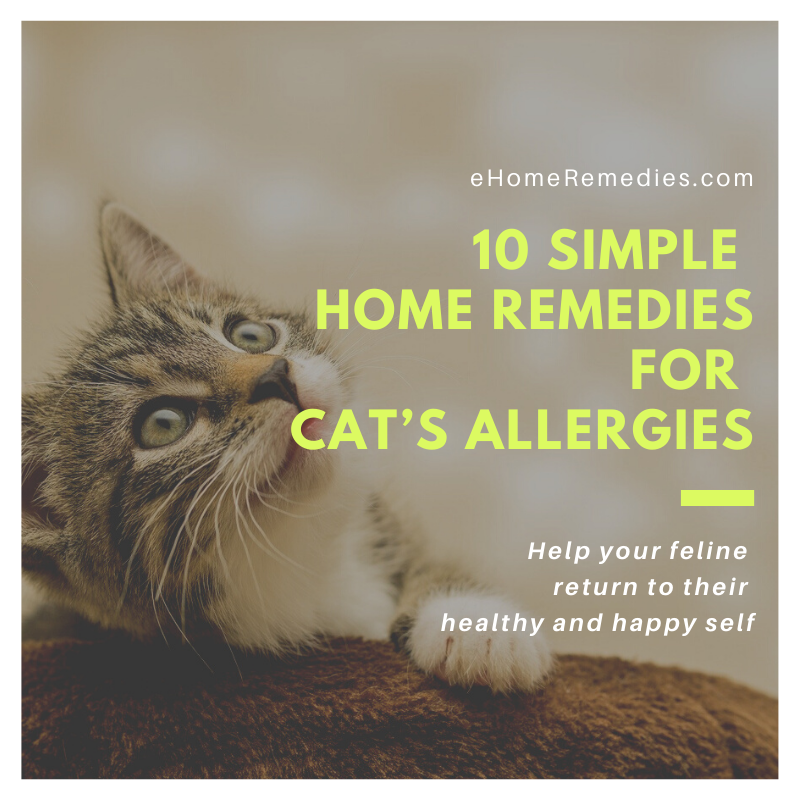Cats are some of the most popular pets in the world. They’re adorable, cuddly, and they keep your home pest-free! Unfortunately, when it comes to allergies, cats can be quite miserable. If you have a cat with allergies or suspect that your cat might be developing an allergy to something at home (or outside), don’t worry – help is on its way! Home remedies for cat allergies will help your furry friend return to their healthy and happy self once again.
What Causes Cat Allergies?
Cats and kittens of any age can be affected by allergies. Cats and kittens who have access to the outdoors can be more prone to developing or being affected by allergies. There are a few main causes of allergies in cats which include:
- Airborne substances
- Food allergies
- Allergies caused by a flea infestation
- Allergenic triggers coming into contact with the skin
- Other environmental factors
It is important to monitor your cat regularly and understand if they are prone or beginning to develop allergenic symptoms. When you are familiar with your cat’s normal health and behavior, you will be able to notice any changes in relation to allergies.
As mentioned before, any cat or kitten of any age can have allergies, especially if they have access to the outside. Furthermore, there are several specific things that can cause allergies in cats and kittens. These allergenic substances are:
- Foods
- Prescription drugs
- Pollens from grass, trees, mould, mildew, flowers, weeds and dust
- Cleaning products
- Perfumes and deodorants
- Flea control products
- Flea bites and infestations
- Fabric
- Cigarette smoke
- Materials made from rubber and plastic
If your cat or kitten has regular access or exposure to any of the items listed above and they are not as healthy as they usually are, chances are your cat is suffering from allergies.
Cat Allergy Symptoms
Allergies in cats and kittens can affect each feline differently. How allergenic your cat is depends on their age, sensitivity to the allergen, and overall health.
- Developing of rashes
- Itchiness
- Dry skin
- Red skin
- Loss of fur in patches
- Watery eyes
- Sneezing
- Constant scratching
- Coughing
- Wheezing
- Itchy eyes
- Vomiting
- Diarrhea
- Snoring – caused by an inflamed throat
- Itchy ears and ear infections
- Swollen paws
- Chewing the paws
- Clear nasal discharge
Many times when your cat begins to suffer from allergies, there will be more than one sign or symptom exhibited. If your cat or kitten shows any signs of allergies, it is important to properly diagnose your cat’s symptoms before you begin any treatment.
10 Natural Cat Allergy Remedies – How to Treat Your Cat’s Allergies at Home
A quick visit to your local veterinarian will help determine if indeed your cat has allergies as well as determine if there are any other underlying health issues. Once you have a positive diagnosis of allergies, your vet can also help narrow down the potential cause.
Prevention is one of the main avoidance for allergies in cats. However, certain environmental factors cannot be controlled. When your cat or kitten has symptoms or a diagnosis of allergies, you can use herbal remedies to help soothe your cat.
1. Internal and External Use of Coconut Oil

Coconut Oil is an excellent home remedy due to its moisturizing effects on the skin when it is directly applied. If you want your cat to have a double dose of coconut oil by applying it to the skin in addition to allowing your cat to ingest a small amount, you will help your cat’s allergies inside and out.
Required Ingredients:
- Organic Coconut Oil
Process:
- Take ½ -1 tsp. and directly apply to the skin in areas where your cat is scratching the most.
- Depending on the size of your cat, give them a small amount of coconut oil for them to eat/drink with their meal.
- Directly apply the coconut oil daily and allow your cat to ingest the coconut oil throughout the duration of their allergies.
Notes: Be careful to not let your cat ingest too much coconut oil because an overload in the system can cause oily stools.
2. Consumption of Omega-3 Fatty Acids

Omega-3 Fatty Acids are a great way to ease your cat’s allergy symptoms. Simply adding an appropriate amount to your cat’s diet will drastically improve any allergy signs and symptoms they have.
Required Ingredients:
- Omega 3 (either supplements or can be found in tuna or wet cat foods containing fish)
Process:
- Measure out an appropriate amount of Omega 3’s based on the size of your cat. (For every 1 pound your cat weighs, you should provide ¼ teaspoon of Omega 3’s)
- Give your cat the Omega 3 source once per day for the entire allergy season or until they are showing improvements.
3. Directly Applying Evening Primrose

Evening Primrose is known for its gentle and soothing properties. Evening primrose can stop any itchy, irritated, and/or red skin by providing much-needed moisturizing. The naturally occurring anti-itch agents found in Evening Primrose will help stop your cat from scratching its already irritated skin.
Required Ingredients:
- 1 bottle of Evening Primrose
- Elizabethan Collar
Process:
- Take approximately 1 tablespoon of Evening Primrose and directly apply it to the affected areas.
- Place the Elizabethan Collar on your cat to prevent them from licking off the Evening Primrose.
- Allow the Evening Primrose to remain on the skin until it is fully absorbed.
- Repeat once daily until there is a significant improvement.
4. Consumption of Acidophilus

Acidophilus is a good bacteria that when consumed can help balance the internal and external parts of the body. When your cat’s immune system and intestinal tract are functioning healthy and properly, they will be less likely to develop allergies. In the instance they already suffer from allergies, allowing your cat to consume Acidophilus can help stop the allergies from worsening.
Required Ingredients:
- Acidophilus (either found in yogurt, supplements, or pet food forms)
Process:
- Provide your cat or kitten the appropriate amount of Acidophilus twice a day, with their meals.
- Continue providing Acidophilus until there are no longer allergies seen in your cat.
Notes: Acidophilus can become a part of your cat’s daily diet should you so choose to do so.
5. Bathing Your Cat
While this is a seemingly easy task, some cats are not fond of water. If you can get your cat to take a bath to ease its allergenic symptoms, this is one of the best ways to help your cat heal and reduce signs and symptoms associated with allergies.
According to Dr. William Carlson of In Town Animal Hospital in Atlanta, Georgia, cool water combined with a soap-free and gentle shampoo can ease your cat’s allergies right away. When your cat is placed in the bath, any pollen or mold spores found in your cat’s skin will be significantly reduced on the spot.
Required Ingredients:
- Tub or sink
- Slightly cool water
- A gentle, soap-free shampoo
Process:
- Add the shampoo and the water to the sink or the tub.
- When your cat is ready, add them to the water and allow their entire body to be in the water.
- Let them sit in the bath for a couple of minutes before rinsing with cool water.
- Remove your cat from the tub or sink and repeat with this sort of bath at least once per week.
Notes: While this home remedy is very effective if your cat is too stressed to go into the water or does not like water at all, do not force your cat to do this treatment.
6. Discontinue the Use of Plastic Bowls

If you have plastic food or water bowls for your cat, this can be the main cause of any allergies they are experiencing. The chemicals in the plastic can seep into your cat’s food or water and cause allergies from the inside.
Required Ingredients:
- Ceramic, glass, or stainless steel bowl
Process:
- Throw away any plastic food or water bowls.
- Replace with a ceramic, glass, or stainless steel bowl.
- Clean the bowls regularly to maintain high levels of hygiene.
7. Using an Oatmeal Soak

Oatmeal is widely known for its skin-soothing properties and is used by humans and animals alike to relieve their symptoms. If you can convince your cat to soak for a few minutes in the oatmeal mixture, they will quickly be relieved of their external allergy signs and symptoms.
Required Ingredients:
- ½ Cup Warm water
- ¾ Cup Raw rolled oats
- Towel
Process:
- Combine the rolled oats with the warm water and combine until a thick paste is created.
- Directly apply this oatmeal paste to the cat’s skin and fur.
- Allow the oatmeal to rest on the skin for at least ten minutes.
- Rinse the oatmeal off and repeat the treatment at least two to three times per week until their allergies have subsided.
8. Wiping Down Your Cat
Giving your cat a gentle wipe-down can help reduce any pollen or mold build-up in the skin and fur. If your cat has access to the outdoors and has started showing signs of allergies, you can gently wipe down your cat before they come inside. This will keep signs and symptoms at bay as well as reduce the spread of allergens.
Required Ingredients:
- Warm wet cloth or baby wipe
Process:
- Take the warm wet cloth or baby wipe and wipe your cat down completely.
- When you are wiping down your cat, you should start at the head and move towards the base of the tail.
- Make sure you have wiped all areas of your cat.
- Repeat daily, especially if your cat goes outside.
Notes: Since this treatment is so easy and gentle, you can add this regime to your cat’s daily routine. Not only will your cat feel cleaner, but your cat will also have reduced chances of being affected by environmental allergies.
9. Reduce Dust in Your Cat’s Environment
Occasionally, your cat can start sneezing and coughing due to the amount of dust present in their environment. Dust allergies can be triggered by dust in the air or carpet, cat litter dust, beds, or living in unclean environments.
Required Ingredients:
- Vacuum
- Duster
- Closed lid cat box
- Cat litter with lower amounts of dust produced.
Process:
- Throughout vacuum and dust as many areas in your home as possible.
- Change your cat’s cat litter daily and switch to a cat litter brand that will not produce as many dust-causing allergies.
10. Adjusting Your Cat’s Diet
If your cat has allergies caused by any food you have provided, this allergen can sometimes take time before your cat can become fully back to normal.
It is important to understand that adjusting your cat’s daily diet takes time. This will keep your cat healthy as well as prevent the spread of any further allergenic signs and symptoms.
Required Ingredients:
- A new brand of wet or dry cat food that does not contain fillers or by-products.
Process:
- Slowly introduce the new cat food to your cat’s current food bowl.
- Each day, add a little more than the day before until the new food has completely replaced the previous food.
- If the new food is causing any of the signs and symptoms listed earlier, it is optional to choose another type or brand of cat food.
- When you have found a food that suits your cat or kitten, maintain this diet to prevent stress and /or irritated bowels.
Notes: Changing your cat’s food should be a slow process to prevent stress or health issues.
Infographic
When you have noticed that your cat is suffering from any or a few of the signs and symptoms associated with allergies, you should seek to begin treatment right away. Not only will immediate treatment allow you to prevent further spread or irritation caused by the allergies, but also your cat will be soothed and calmer since their signs and symptoms will be relieved.
Herbal remedies for cat allergies are an excellent alternative to the harsh and sometimes expensive remedies that are often prescribed. Once you receive a proper diagnosis for your cat or kitten, you should immediately begin to treat the allergies. Choosing to use these home remedies is not only easy, but they are also effective in maintaining a healthy lifestyle for you and your cat.






